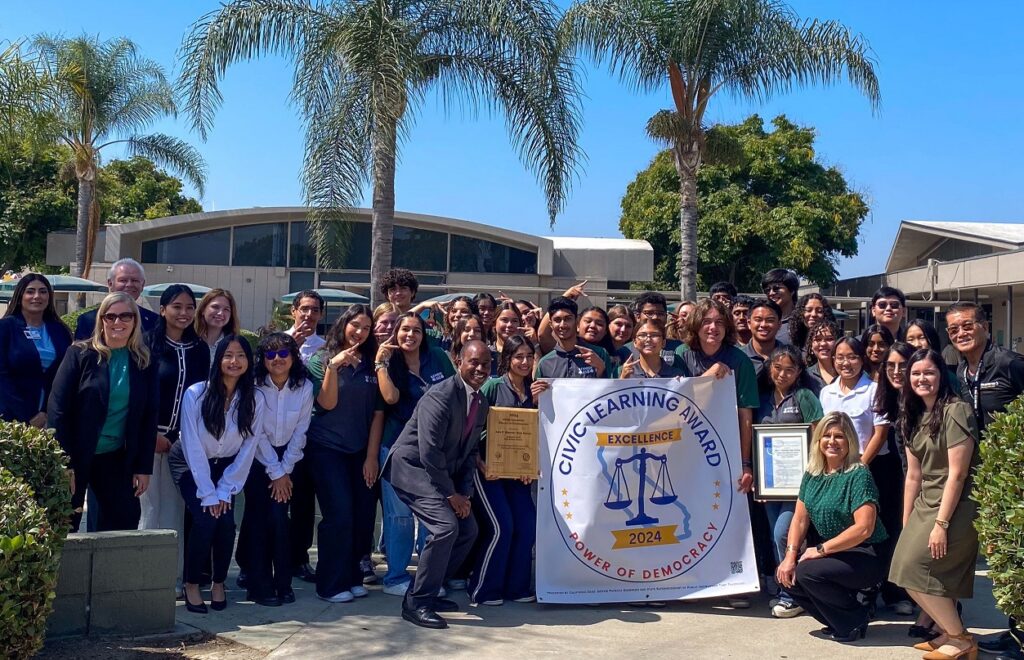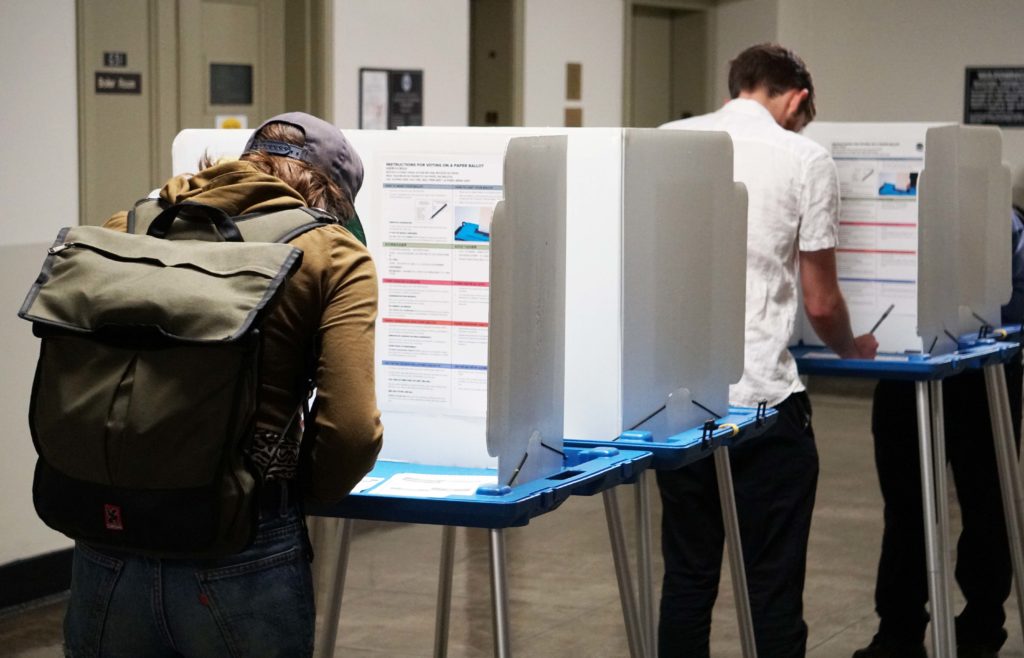
State Superintendent of Instruction Tony Thurmond and Chief Justice Patricia Guerrero honored Kennedy High in Anaheim for its outstanding civic learning programs.
Credit: Courtesy Anaheim Union HSD
The State Seal of Civic Engagement, approved by the State Board of Education in 2020, marked a vital progression in developing students who are not only academically strong but also civically active and socially aware.
However, the absence of this seal in the College and Career Indicators (CCI) of the California School Dashboard represents a missed opportunity — until now. Recently, the State Board of Education has requested that the California Department of Education incorporate the seal into the CCI. By incorporating it, we can incentivize schools to cultivate civic responsibility, enhance the relevance of education and elevate student voices. This initiative offers a powerful chance to foster active citizenship, connect learning to real-world challenges, and inspire students to engage meaningfully with their communities.
The Seal of Civic Engagement, which is affixed to a student’s diploma or certificate of completion, should be added alongside other key indicators like the State Seal of Biliteracy, ensuring it receives the attention it deserves. With local criteria including a minimum GPA of 2.0 in all social science courses and the completion of a civic engagement project, schools would now be held accountable to a higher standard of civic instruction. The inclusion of the civic engagement seal on the California School Dashboard is not only a recognition of student accomplishments but also a catalyst for broader shifts in educational practices that prioritize civic education.
Incorporating the California Seal of Civic Engagement into the school dashboard will encourage schools to shift away from traditional instructional models and move toward more student-centered approaches. One of the primary benefits is the emphasis on elevating student voice and agency. Rather than positioning students as passive recipients of knowledge, the seal incentivizes schools to create opportunities for students to take on leadership roles, participate in community-based projects and engage in civic dialogue, and ultimately give students a reason to vote and participate in our democracy.
Student-driven learning experiences will become a central focus, allowing students to take ownership of their education and the role they play in society. This shift fosters not only a deeper understanding of democratic principles but also a sense of responsibility and empowerment. As students take on active roles in addressing real-world challenges, they develop leadership, critical thinking and problem-solving skills, all while becoming more engaged in their communities.
The connection between civic engagement and student well-being is becoming increasingly evident through research at UCLA and USC. By embedding service learning into the curriculum, schools can create more holistic learning experiences that connect academic content with community service. Civic engagement projects offer students a sense of purpose and belonging, which can significantly contribute to their mental health.
When students work on projects that address real-world problems, they not only learn about the issues but also engage emotionally and intellectually with the material. Service learning provides an avenue for students to apply what they’ve learned in the classroom to make a tangible impact in their communities, which can enhance their sense of agency and improve their emotional well-being. Schools will be encouraged to develop instructional models that prioritize these types of experiences, ultimately supporting the mental and emotional health of students in ways that extend beyond traditional academic instruction.
One of the most exciting opportunities provided by the California Seal of Civic Engagement is the potential to integrate civic engagement with career exploration. Schools can align civic projects with career pathway programs, providing students with hands-on learning experiences that are directly related to potential college majors and career interests.
For example, students interested in public service, environmental sustainability or health care could engage in civic projects that allow them to explore these fields while still in high school. By linking civic engagement with career pathways, schools not only make learning more relevant but also provide students with early exposure to future career opportunities. This shift in instructional focus ensures that students are better prepared for both post-secondary education and the workforce.
A key feature of the Seal of Civic Engagement is its potential to drive instructional shifts that address pressing societal issues. With its inclusion in the dashboard, schools will be incentivized to create project-based learning opportunities that tackle local and global challenges such as climate change, affordable housing, health care access and mental health.
By engaging in civic projects that address these critical issues, students develop the skills necessary to analyze problems, research potential solutions and implement action plans. These hands-on experiences prepare students to think critically and creatively, making their learning more meaningful and applicable to real-world contexts. The seal encourages schools to foster a learning environment where students can connect their education to the challenges facing their communities and the world.
The Seal of Civic Engagement also promotes active citizenship by encouraging schools to design lessons that emphasize democratic participation, voter registration and civic responsibility. By embedding these democratic practices into the curriculum, schools can ensure that students are not only knowledgeable about the issues but also understand the importance of participating in democratic processes.
This instructional shift prepares students to be informed and engaged citizens beyond graduation, helping to create a more active and participatory democracy. Students who understand the value of their voice and their vote are more likely to carry those values into adulthood, becoming lifelong advocates for their communities and society at large.
By nudging schools to prioritize civic education, we can prepare a generation of students who are not only academically accomplished but also socially conscious and ready to engage with the challenges of the modern world. From promoting student well-being to encouraging career exploration and addressing critical societal issues, including the Seal of Civic Engagement in the state’s accountability system is a vital step toward creating a more equitable and empowered future.
•••
Michael Matsuda is superintendent of Anaheim Union High School District in Southern California.
The opinions in this commentary are those of the author. We welcome guest commentaries with diverse points of view. If you would like to submit a commentary, please review our guidelines and contact us.

